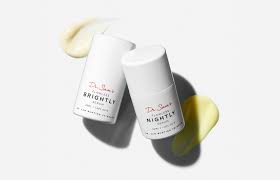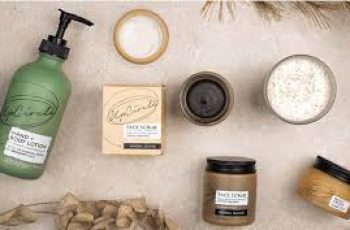
Can Azelaic Acid Be Mixed With Moisturizer?
Azelaic acid has recently gained a lot of attention in the skincare world. While it might not be as famous as retinol or vitamin C, this unsung hero deserves a place in your daily routine.
If you’ve been reading the latest Beauty Insiders blog posts, you’ve likely noticed a rising buzz around this multi-tasking ingredient. But if you haven’t, don’t worry—here’s what you need to know.
What Is Azelaic Acid?
Azelaic acid is a naturally occurring compound found in grains like wheat, barley, and rye. It has powerful antibacterial and anti-inflammatory properties.
These properties make it especially effective for treating acne, rosacea, and post-acne pigmentation. It’s also known to help brighten the skin and even out the skin tone.
Over-the-counter products usually contain 10–15% azelaic acid. Stronger concentrations may require a prescription from a dermatologist.
Azelaic acid can be found in creams, gels, serums, and even cleansers. It’s gentle but effective, making it suitable for sensitive skin types as well.
Before starting a new product, especially one with active ingredients, always consult your dermatologist. This helps avoid irritation or side effects.
For a deep dive into how azelaic acid works, check out our full blog post dedicated to it. Now, let’s explore how it fits into your daily routine.
How to Use Azelaic Acid With a Moisturizer
Azelaic acid works best when layered with other products in the correct order. The order matters because it affects absorption and effectiveness.
Start your routine by washing your face thoroughly with a gentle cleanser suited for your skin type. This clears away dirt, oil, and makeup.
After cleansing, apply a mild toner if desired—something with soothing ingredients like chamomile or rose water works well here.
Next, use a serum with hyaluronic acid. This step helps retain surface moisture and prepares the skin to absorb the next layers better.
Once your skin has absorbed the hyaluronic acid, apply your azelaic acid product. This can be a serum or cream, depending on your preference.
Finally, seal everything in with a moisturizer. This step helps lock in hydration and protect the skin barrier from environmental damage.
If you’re using this routine in the morning, don’t forget SPF 30 or higher. Azelaic acid can make your skin more sensitive to sunlight.
This step-by-step routine is highly effective. However, everyone’s skin is different, so you may need to make slight adjustments to match your skin’s needs.
Why a Moisturizer Is Still Important
Many people misunderstand what a moisturizer does. Unlike a serum, a moisturizer doesn’t penetrate deeply into the skin.
Instead, it works on the skin’s outer layer to provide hydration and prevent water loss. It creates a physical barrier to shield your skin.
This barrier helps protect the skin from free radicals, pollution, and UV rays. That’s why it’s an essential step in your routine, even if your skin isn’t dry.
If you want to target specific concerns like aging or hyperpigmentation, use a serum for that. A moisturizer supports, but doesn’t replace, treatment products.
Do I Apply Azelaic Acid Before or After Moisturizer?
This is a common question, and the answer depends on the product’s consistency and your personal routine. But here’s a general rule of thumb.
Apply azelaic acid before your moisturizer. This ensures the acid is absorbed directly by the skin and can work more effectively.
If you use a hyaluronic acid serum, apply that first. Hyaluronic acid will draw moisture into the skin and reduce the drying effects of azelaic acid.
After azelaic acid, follow with your moisturizer. This layering process helps each ingredient work to its fullest potential without clashing.
Using your products in this order also reduces the risk of dryness, redness, or irritation, especially for those with sensitive skin.
Can You Mix Azelaic Acid and Niacinamide?
Yes, you can absolutely use azelaic acid and niacinamide together. In fact, they make an excellent skincare duo.
Niacinamide is known for its soothing and hydrating properties. It also helps to refine pores and improve the overall texture of the skin.
When paired with azelaic acid, it enhances the treatment of acne, blemishes, and post-inflammatory hyperpigmentation.
This combo works especially well for those dealing with breakouts, dark spots, or uneven skin tone. Together, they tackle both inflammation and discoloration.
Niacinamide also strengthens the skin’s barrier, which can help reduce the sensitivity that sometimes comes with using active ingredients.
Can I Use Salicylic Acid and Azelaic Acid?
Yes, but not necessarily at the same time. Salicylic acid is a beta hydroxy acid (BHA) known for its deep pore-cleansing properties.
Azelaic acid works more gently on the skin but still helps clear pores and reduce inflammation. If you want to use both, alternate them.
For example, use azelaic acid in the morning and salicylic acid at night, or switch them on alternate days.
This helps avoid over-exfoliation and irritation, especially if you have dry or sensitive skin. It’s all about finding the right balance.
Even better, use both during your nighttime routine when your skin is in repair mode and not exposed to sun or pollution.
Which Comes First: Niacinamide or Azelaic Acid?
When using both niacinamide and azelaic acid, apply niacinamide first. It hydrates the skin and prepares it to better absorb the azelaic acid.
This layering order helps minimize irritation and ensures deeper penetration of the active ingredients.
Stick to the general rule: apply skincare products in order from thinnest to thickest. Start with water-based serums, then heavier creams or lotions.
Following this rule will help you get the best results from your routine. The right order also avoids product buildup or pilling.
Should You Apply Azelaic Acid to Wet or Dry Skin?
Unlike hyaluronic acid, which should be applied to damp skin to lock in moisture, azelaic acid works best on dry or slightly damp skin.
Applying azelaic acid to wet skin can increase the chances of irritation. Wait a few minutes after cleansing so your face is mostly dry.
After your skin is semi-dry, apply your hyaluronic acid serum first if you use one. Then follow with your azelaic acid product.
Finish with a moisturizer to seal in the hydration and keep your skin barrier protected. This also helps to avoid redness or dryness.
Key Takeaways
Azelaic acid is a gentle yet powerful ingredient for acne, rosacea, and skin brightening.
Always apply it before your moisturizer to allow better absorption.
It can be used safely with hyaluronic acid, niacinamide, and even salicylic acid if spaced properly.
Moisturizers don’t treat skin concerns directly but are essential for hydration and barrier protection.
Use sunscreen daily when using active ingredients like azelaic acid, especially during daytime routines.
Final Thoughts
Adding azelaic acid to your skincare routine can be a game-changer. It’s versatile, effective, and works well with other ingredients.
With the right layering technique, you can reduce acne, fade dark spots, and improve your skin’s overall clarity and health.
Everyone’s skin is unique, so take time to adjust your routine. Keep an eye on how your skin responds and consult a dermatologist if needed.
Looking to upgrade your skincare lineup? Give azelaic acid a try—it just might become your new favorite.


